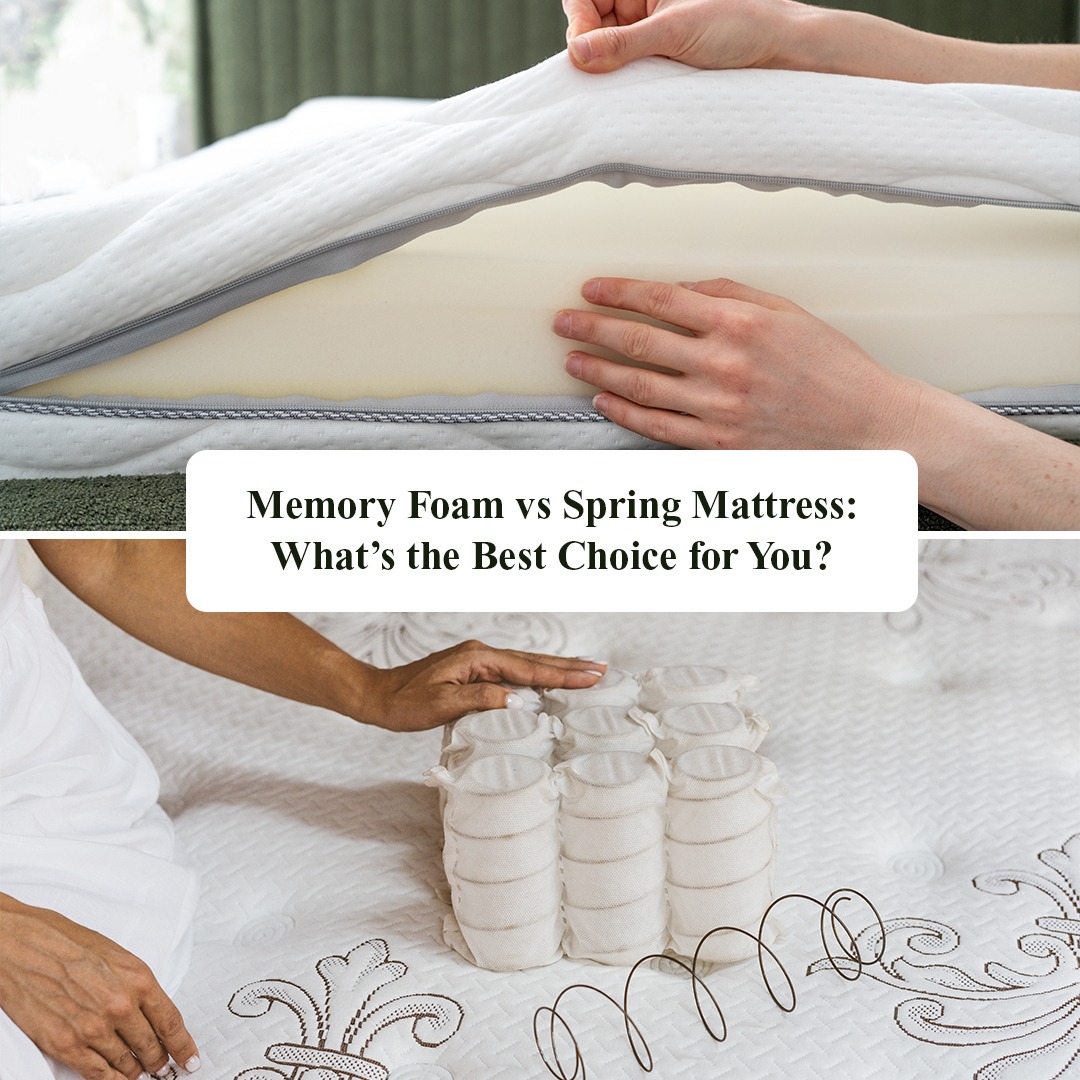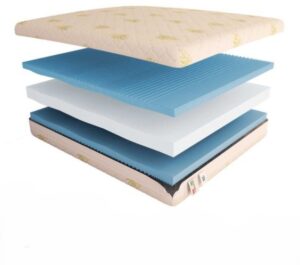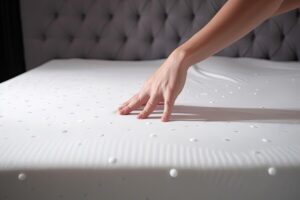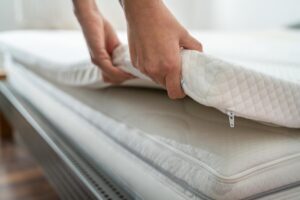Memory Foam vs. Spring Mattress: What’s the Best Choice for You?
If you have been searching for a brand new mattress and you are having a hard time deciding whether to buy one made of memory foam or spring mattresses, you are probably wondering what is the best option for you.
While both of them are equal in quality, they are very different when it comes to feel and functionality. Some people say that a memory foam mattress is better, others prefer a spring mattress. Generally, people usually choose the type that fits their preferences and needs the most.
In this blog post, we will try to highlight the main differences between memory foam and spring mattresses that will help you decide which one is best for you.
Let’s take a closer look at the pros and cons of each type of mattress so that you can make the best and most informed choice.
What is a Memory Foam Mattress?
Memory foam mattresses are made from a novel type of foam, known as visco elastic. When heated and compressed, memory foam moulds to the shape of your body when you sleep. When you lie down, the foam moulds to the contours of your body, with a personalised and enveloping feel. When you get up, the mattress slowly returns to its original shape.
Memory foam was first created by NASA back in the 1960s as a means of providing more comfortable cushioning for the seats of astronauts. It can now be found in mattresses, pillows and even shoes.
What is a Spring Mattress?
Innovated more than a century ago, spring mattresses, otherwise known as innerspring mattresses, are made of metal coil/springs that form a network of support and bounce. Depending on the type and quantity of spring, the support level and firmness of the mattress can vary. Additionally, there are spring mattresses that are more flexible and come with the addition of a layer of comfort, which can be made of foam or fibre.
Comfort and Support
Memory Foam
Memory foam is particularly good at providing personalised comfort. Its viscoelastic properties mean that the foam moulds to the shape of your body, which reduces the stress on pressure points, such as the shoulders, hips and lower back, and can even help to alleviate aches and pains, especially for side sleepers and those with joint pain.
On the flip side, the foaminess makes memory foam unappealing to people who like a more firm foundation: you sink into it, which might not be your thing if you like a little more solidity.
Spring Mattress
Spring mattresses are known for their firmness and support. They offer a hug or a dip depending on your preference. The tension provided by the coils in the mattress provides a sturdy support that is great for back sleepers and stomach sleepers. It also allows you to move around in the bed easily, which is beneficial for combination sleepers who toss and turn during the night.
And yet, unlike memory-foam mattresses, spring ones might not be as supportive of pressure-relief. Over time, coils also no longer spring back the way they once did, and sagging areas can develop.
Motion Isolation
Memory Foam
But there is also one other thing that we really like about memory foam mattresses: the excellent motion isolation. This in short means that you will feel the movements of your partner less when you share a bed with them. You will be less disturbed when your partner turns around or when he wakes up at night. This is just one of the other benefits that lead to a better night’s sleep.
Spring Mattress
Older spring mattresses, and also standard spring mattresses, typically transmit motion from one side of the bed to the other more easily. If your partner moves a lot at night, then you might receive a lot of movement on your side of the bed. Newer spring mattresses with pocketed coils, however, have better motion isolation than their traditional counterparts.
Temperature Regulation
Memory Foam
One of memory foam’s biggest complaints is that it tends to sleep hot. Because memory foam has a denser and tighter, less breathable structure than latex or innerspring, it sleeps warmer. This mattress is also topped with a removable cover that can be machine washed The good news is that modern memory foam mattresses are more likely to include cooling technologies such as gel-infused foam or breathable covers.
Spring Mattress
Usually, spring mattresses have more airflow as a result of the space between the coils, so they sleep cooler than memory foam. They tend to be better for people who sleep hot.
Durability
Memory Foam
The plus side is that memory foam mattresses are extremely durable, and will generally last 7 to 10 years, but over the decades they can lose their ‘memory’, so to speak, leaving them feeling saggy or developing permanent indents where you sleep most often.
Spring Mattress
A coil spring mattress can also be used for many years, provided the coils are of high quality. A high-end coil spring mattress will likely last for at least 8 years and more, whilst a low-end coil spring mattress can start to sag or squeak after only a couple of years.
Price Range
Memory Foam
Although memory foam mattresses are more expensive than spring mattresses, especially if they are coupled with cooling gel or advanced pressure-relief technology, they are now available at an affordable price to suit your budget.
Spring Mattress
Spring mattresses are comparatively inexpensive, too, as most are available for less and are competitively priced at every price level. Even luxury spring mattresses with coils that are individually wrapped, or enhanced with comfort layers, can be priced comparably to highest-quality memory foam models.
Which is Best for You?
Choose Memory Foam if:
- You want a mattress that molds to your body.
- You suffer from joint or muscle pain and need good pressure relief.
- You share a bed and want to minimize motion transfer.
Choose a Spring Mattress if:
- You prefer a firmer, more traditional mattress feel.
- You tend to sleep hot and need a mattress that offers better airflow.
- You like more bounce and find it easier to move around in bed.
Final Thoughts
As for the best choice between memory foam and spring mattresses: ultimately, the decision depends on personal tastes. If you are someone who enjoys a highly customised sleep experience with personalised pressure relief, memory foam might be the way to go. If you prefer a cooler sleep surface and a firmer, more supportive feel, a spring mattress is the way to go.
So, if you can, try both types of mattress in store or, fortunately, many online retailers offer a period of several months where you can test out a mattress at home.
Are you ready for great sleep? Browse our extensive collection of spring mattresses right here.














